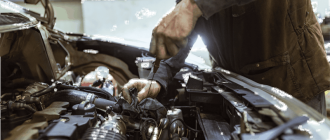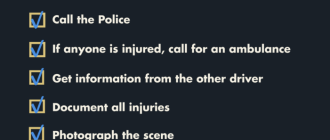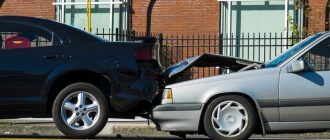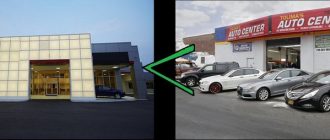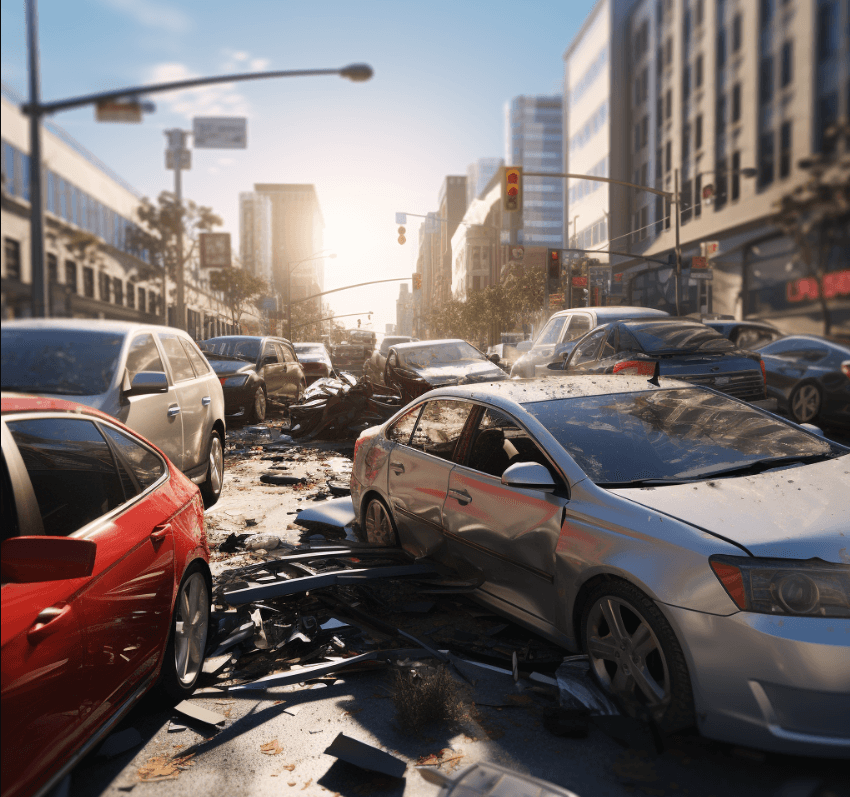
Understanding the Impact of Car Accidents on Vehicle Body Damage: Causes, Consequences, and Solutions
Car accidents are a common occurrence on roads around the world. Whether it’s a minor fender bender or a major collision, these incidents can result in significant damage to the vehicles involved. One of the most visible types of damage is body damage, which refers to any harm done to the exterior of a car.
Body damage can range from small dents and scratches to more serious issues, such as crushed panels or broken windows. In some cases, the damage may be limited to cosmetic issues, while in others, it can affect the structural integrity of the vehicle. Regardless of the severity, body damage can be costly to repair and can have a significant impact on the resale value of a car.
When a car is involved in an accident, the force of the impact can cause the body of the vehicle to crumple or bend. This is especially true in high-speed collisions. The body of a car is designed to absorb and distribute the energy of a crash, but there are limits to its ability to do so. As a result, the body may become distorted or twisted, resulting in visible damage.
It’s important to note that body damage isn’t just a cosmetic issue. Even minor dents or scratches can compromise the protective function of the body, leaving the occupants of the vehicle more vulnerable in the event of another accident. Additionally, body damage can lead to rust and corrosion if left untreated, further deteriorating the condition of the car.
In conclusion, car accidents can cause various types of damage to vehicles, including body damage. This damage can range from minor cosmetic issues to more serious structural problems. Regardless of the severity, it’s crucial to address body damage promptly to ensure the safety and longevity of the vehicle.
What are the types of car accidents causing body damage?
Car accidents can result in various types of body damage, depending on the severity and circumstances of the collision. Some common types of car accidents causing body damage include:
Rear-end collisions: These accidents occur when a vehicle crashes into the back of another vehicle. Rear-end collisions often result in damage to the rear bumper, trunk, and sometimes the frame of the vehicle.
Side-impact collisions: Also known as T-bone accidents, these occur when one vehicle hits another on the side. Side-impact collisions commonly cause damage to the doors, fenders, and sometimes the roof of the vehicle.
Head-on collisions: These accidents happen when two vehicles collide front to front. Head-on collisions can cause severe body damage to the front end, including the hood, grille, headlights, and sometimes the engine.
Roll-over accidents: These accidents occur when a vehicle flips over onto its roof or side. Roll-over accidents can cause extensive body damage to all sides of the vehicle, including the roof, doors, windows, and sometimes the undercarriage.
Single-vehicle accidents: These accidents involve only one vehicle and can result from various factors such as hitting a stationary object, losing control, or driving off the road. Depending on the circumstances, single-vehicle accidents can cause body damage to any part of the vehicle.
Multi-vehicle pile-ups: These accidents involve multiple vehicles colliding with each other. Multi-vehicle pile-ups can cause widespread body damage to all involved vehicles, including front, rear, and side impacts.
It is essential to note that the severity of body damage can vary greatly depending on factors such as vehicle speed, size, and safety features. Regardless of the type of car accident, it is crucial to address and repair any body damage promptly to ensure the safety and functionality of the vehicle.
Frontal collision
A frontal collision occurs when the front ends of two vehicles collide with each other. It is one of the most common types of car accidents and can result in severe damage to both vehicles involved.
When a frontal collision occurs, the force of the impact is concentrated on the front of the vehicles, which can cause significant damage to the engine, radiator, and other vital components. The front bumpers and hoods are also likely to be damaged or completely destroyed.
In addition to the damage to the vehicles, frontal collisions can also result in serious injuries to the occupants. The force of the impact can cause the driver and passengers to be thrown forward, potentially leading to head, neck, and chest injuries.
To reduce the risk of a frontal collision, it is important to always drive at a safe speed, maintain a safe following distance, and stay alert while behind the wheel. It is also crucial to wear seat belts and ensure that all passengers are properly restrained.
In the event of a frontal collision, it is important to seek medical attention immediately, even if there are no visible injuries. Additionally, it is advisable to contact the authorities and report the accident to your insurance company.
Overall, frontal collisions can be extremely dangerous and cause significant damage to both vehicles and occupants. Taking precautions and practicing safe driving habits can help reduce the risk of being involved in a frontal collision.
Side impact
Side impact accidents, also known as T-bone collisions, occur when one vehicle crashes into the side of another vehicle. These types of accidents can result in significant damage to the body of the impacted vehicle.
When a side impact occurs, the force of the impact is concentrated on the side of the vehicle, causing the doors and panels to cave in. This can lead to extensive damage to the body, including dents, scratches, and broken windows.
In addition to the visible damage, side impact accidents can also cause structural damage to the vehicle. The impact can weaken the frame and affect the structural integrity of the car, making it less safe to drive.
To repair the body damage caused by a side impact, it is important to take the vehicle to a reputable auto body shop. The experts at the shop will assess the damage and determine the best course of action. This may involve replacing damaged panels, repairing dents, and repainting the affected areas.
It is also important to address any structural damage that may have occurred. This may require additional repairs, such as frame straightening or panel realignment, to ensure the vehicle is safe to drive.
Side impact accidents can cause significant damage to the body of a vehicle. It is crucial to address this damage promptly and properly to restore the vehicle’s appearance and safety.
Rollover
A rollover accident occurs when a vehicle tips over onto its side or roof during a crash. This type of accident is particularly dangerous and can result in severe injuries or even death.
Rollover accidents can happen for several reasons, including high-speed turns, swerving to avoid an obstacle, or a collision with another vehicle. Vehicles with a higher center of gravity, such as SUVs and trucks, are more prone to rollovers.
During a rollover, the occupants of the vehicle can be thrown around inside, leading to injuries from impact with the vehicle’s interior or ejection from the vehicle. In some cases, the roof of the vehicle may collapse, causing additional injuries.
To prevent rollover accidents, it is important to drive at a safe speed, especially when taking turns. Avoid sudden maneuvers and maintain a safe distance from other vehicles. Furthermore, it is crucial to regularly maintain your vehicle to ensure its stability and balance.
In the event of a rollover accident, it is essential to seek medical attention immediately, even if you do not feel injured. Some injuries, such as internal bleeding or concussions, may not be immediately apparent. Additionally, it is important to contact a qualified attorney to understand your rights and options for seeking compensation for your injuries and damages.
| Causes of Rollover Accidents | Preventing Rollover Accidents |
|---|---|
|
|
Minor parking lot damage
Minor parking lot damage is a common occurrence that can happen to any vehicle. It typically involves small dents, scratches, or scrapes on the body of the car. While these damages may seem insignificant, they can still be a cause for concern and should not be ignored.
Even though the damage may seem minor, it can still affect the appearance and value of the vehicle. A small dent or scratch can be an eyesore and make the car look less appealing. Additionally, if the damage is not repaired promptly, it can lead to further issues such as rusting or paint peeling.
If you notice any minor parking lot damage on your vehicle, it is important to take action. First, you should assess the extent of the damage. If it is a small scratch or scrape, you may be able to repair it yourself using a touch-up paint kit. However, if the damage is more severe or if you are unsure how to fix it, it is best to consult a professional auto body repair shop.
When choosing an auto body repair shop, it is important to do your research and find a reputable one. Look for shops with good reviews and a proven track record of providing quality repairs. You should also inquire about their pricing and warranty policies to ensure that you are getting a fair deal.
Overall, while minor parking lot damage may seem insignificant, it is still important to address it promptly. Taking care of small dents, scratches, and scrapes can help maintain the appearance and value of your vehicle in the long run.
How to determine the extent of damage after an accident?
After a car accident, it is important to assess the extent of the damage to your vehicle. This will help you determine the necessary repairs and estimate the cost of the repairs. Here are some steps to follow in order to determine the extent of damage:
| Step | Description |
|---|---|
| 1 | Inspect the exterior |
| 2 | Check for structural damage |
| 3 | Examine the interior |
| 4 | Test the functionality |
| 5 | Consult a professional |
First, inspect the exterior of your vehicle for any visible damage such as dents, scratches, or broken lights. Take note of the location and severity of the damage.
Next, check for any signs of structural damage. Look for misaligned panels or doors, as well as any cracks or deformities in the frame. This type of damage can affect the safety and performance of your vehicle.
It is also important to examine the interior of your car. Check the condition of the seats, dashboard, and other components. Look for any signs of damage or displacement.
After inspecting the exterior and interior, test the functionality of your car. Check if all the lights, windows, and doors are working properly. Test the brakes, steering, and other essential functions to ensure they are functioning as they should.
If you are unsure about the extent of the damage or if you lack the necessary expertise, it is recommended to consult a professional. An experienced mechanic or auto body specialist will be able to provide a more accurate assessment and help you determine the necessary repairs.
Remember, it is important to assess the extent of damage after an accident to ensure your safety on the road and to prevent further damage to your vehicle.
Visual inspection
Visual inspection is an important step in assessing car accidents and body damage. It involves thoroughly examining the exterior and interior of the vehicle to identify any visible signs of damage. This can include dents, scratches, broken windows, misaligned panels, and other forms of body damage.
During a visual inspection, it is important to pay attention to details and look for any inconsistencies or abnormalities. This can help determine the severity of the damage and whether further repairs or replacements are necessary. It is also essential to document the findings through photographs or written notes to provide evidence for insurance claims or legal purposes.
Some areas that should be examined during a visual inspection include the front and rear bumpers, doors, mirrors, lights, and the overall paint condition. It is also important to inspect the undercarriage of the vehicle for any signs of damage, such as leaking fluids or bent components.
Visual inspection can provide valuable information about the extent of damage and help determine the best course of action for repairs. It is recommended to seek professional assistance for a thorough visual inspection, as trained experts can identify hidden damage and provide an accurate assessment.
In conclusion, visual inspection plays a crucial role in evaluating car accidents and body damage. It helps identify visible signs of damage, document findings, and determine the necessary repairs. By conducting a thorough visual inspection, individuals can ensure the safety and reliability of their vehicles following an accident.
Checking body geometry
One important aspect to consider when assessing car accidents and body damage is the body geometry of the vehicle. Body geometry refers to the overall shape and alignment of the vehicle’s frame and body components.
After a car accident, it is essential to check the body geometry to determine if there are any structural damages. This assessment is typically performed by a professional auto body technician or a mechanic with expertise in collision repairs.
The process of checking body geometry involves using specialized equipment, such as laser measuring systems and frame straightening machines. These tools allow technicians to measure and analyze the alignment of key components, such as the frame rails, suspension mounts, and body panels.
During the assessment, the technician will compare the measured values to the manufacturer’s specifications for the vehicle. If any deviations are found, it indicates that the vehicle’s body geometry has been compromised due to the accident.
Body geometry issues can lead to several problems, including misalignment of the wheels, uneven tire wear, and compromised handling and stability. Additionally, if the body geometry is significantly affected, it can impact the effectiveness of safety features, such as airbags and crumple zones.
If body geometry issues are identified, it is crucial to address them promptly. Depending on the severity of the damage, repairs may involve realigning the frame, replacing damaged components, or even replacing the entire vehicle body.
| Benefits of checking body geometry | Consequences of ignoring body geometry issues |
|---|---|
|
|
Checking the body geometry after a car accident is essential to ensure the vehicle’s safety, performance, and longevity. By addressing any issues promptly, you can prevent further damages and maintain the overall quality of your vehicle.
Diagnosing hidden damage
After a car accident, it’s crucial to not only address the visible body damage but also assess for any hidden damage that may have occurred. Hidden damage can be just as problematic and may lead to further issues if left untreated. Here are some important steps to diagnose hidden damage:
- Inspect the vehicle thoroughly: Take the time to visually examine the entire car, both inside and outside. Look for any signs of misalignment, dents, or scratches that may indicate hidden damage.
- Check for leaks: Inspect the vehicle for any signs of fluid leaks, such as oil, coolant, or transmission fluid. Leaks can indicate damage to the engine or other vital components.
- Test the lights and electronics: Ensure that all lights, indicators, and electronics are functioning properly. Malfunctioning lights or electronics can be a sign of hidden damage to the electrical system.
- Listen for unusual noises: Pay attention to any unusual noises coming from the engine, brakes, or suspension. Strange noises can indicate damage to these systems that may not be immediately visible.
- Perform a wheel alignment check: A misaligned wheel can be a sign of hidden damage to the suspension or steering system. Check for any signs of uneven tire wear or pulling to one side while driving.
- Get a professional inspection: If you suspect hidden damage or are unsure about the extent of the damage, it’s best to have a professional mechanic inspect the vehicle. They have the expertise and tools to identify any hidden damage that may not be apparent to the untrained eye.
Remember, diagnosing hidden damage is essential to ensure the safety and longevity of your vehicle. By addressing any hidden damage promptly, you can prevent further issues and potentially costly repairs down the line.
What to do with a heavily deformed body?
Dealing with a heavily deformed body after a car accident can be an overwhelming and distressing experience. However, it is important to take the necessary steps to ensure proper care and support for the individual affected. Here are some important things to consider:
- Seek immediate medical attention: It is crucial to seek medical help as soon as possible to assess the extent of the injuries and provide appropriate treatment. Emergency services should be contacted immediately to ensure the safety and well-being of the individual.
- Contact the authorities: Reporting the accident to the police is important, especially if there are serious injuries or fatalities involved. The authorities will investigate the incident and document the necessary information for insurance purposes and legal proceedings.
- Notify family and friends: It is important to inform the family and friends of the individual involved in the accident. They can provide emotional support during this difficult time and help make important decisions regarding medical treatment and legal matters.
- Consult with a personal injury lawyer: If the accident was caused by someone else’s negligence, it is advisable to consult with a personal injury lawyer. They can provide guidance on legal options, help file a claim for compensation, and ensure the individual’s rights are protected.
- Consider psychological support: Dealing with a heavily deformed body can have a significant impact on the individual’s mental well-being. It is important to seek psychological support, such as counseling or therapy, to address any emotional trauma and promote healing.
- Explore rehabilitation options: Depending on the severity of the deformities, rehabilitation may be necessary to regain physical function and improve quality of life. Working with healthcare professionals and specialists can help determine the best course of action for rehabilitation, such as physical therapy or reconstructive surgery.
- Seek financial assistance: The medical expenses and ongoing care required for a heavily deformed body can be significant. It is important to explore financial assistance options, such as health insurance, disability benefits, or assistance programs, to help cover the costs and ensure access to necessary treatments and support.
Dealing with a heavily deformed body after a car accident is a challenging and complex process. By taking the appropriate steps and seeking the necessary support, individuals affected can receive the care they need and work towards recovery and healing.
Repair options
When it comes to repairing body damage after a car accident, there are several options available. The best option for you will depend on the extent and severity of the damage, as well as your budget and personal preferences.
One option is to take your car to a professional auto body shop. They have the expertise and equipment to repair the damage and restore your car to its pre-accident condition. They can fix dents, scratches, and other types of body damage, as well as replace any damaged parts. This option is often recommended for more extensive or complicated repairs.
Another option is to choose a DIY approach and attempt to repair the damage yourself. This can be a cost-effective option if you have the necessary skills and knowledge. However, it is important to note that repairing body damage can be difficult and time-consuming, especially if you do not have experience in this area. It is also important to ensure that you have access to the right tools and materials.
If the damage to your car is minor, you may also consider using a touch-up paint or a scratch repair kit. These products are designed to help you fix small scratches and chips on the surface of your car’s paint. While they may not provide a permanent solution, they can help improve the appearance of your car and prevent further damage.
In some cases, the damage to your car may be so severe that it is not cost-effective to repair it. In these situations, you may need to consider replacing your car or selling it for parts. It is important to consult with a professional to determine the best course of action for your specific situation.
Regardless of the repair option you choose, it is important to address body damage as soon as possible. Leaving it untreated can lead to further damage and potential safety issues. It is also important to work with a reputable and trustworthy repair provider to ensure that the job is done correctly and to your satisfaction.
Body replacement
When a car is involved in a severe accident, the body of the vehicle may sustain extensive damage. In such cases, body replacement becomes necessary to restore the car’s structural integrity and ensure the safety of its occupants.
Body replacement is a complex process that involves removing the damaged body panels and replacing them with new ones. This requires skilled technicians who are trained in body repair and have the necessary tools and equipment.
Before the replacement process begins, the damaged body panels are carefully inspected to assess the extent of the damage. If the damage is limited to a specific area, only those panels will be replaced. However, if the damage is extensive, the entire body may need to be replaced.
The replacement panels are sourced from the car manufacturer or from aftermarket suppliers. It is important to ensure that the replacement panels are compatible with the car’s make and model to ensure a proper fit and finish.
During the body replacement process, the technicians will carefully remove the damaged panels, taking care not to cause any further damage to the car’s structure. They will then install the new panels, ensuring that they are aligned properly and securely attached to the car’s frame.
After the replacement is complete, the car will undergo a thorough inspection to ensure that all the panels are installed correctly and that the car’s structural integrity has been restored. This may involve checking for any signs of misalignment, gaps, or other inconsistencies.
Body replacement is an important part of car accident repair, as it ensures that the car is restored to its pre-accident condition and meets the necessary safety standards. It is essential to entrust this task to qualified professionals who have the expertise and experience to carry out the process effectively and efficiently.
Conversion or scrapping
When a car is involved in a serious accident and sustains significant body damage, the decision must be made whether to convert or scrap the vehicle. This decision depends on various factors, such as the extent of the damage, the cost of repairs, and the value of the car.
If the damage is extensive and the cost of repairs exceeds the value of the car, it may be more economical to scrap the vehicle. Scrapping involves dismantling the car and selling the individual parts for salvage. This can help recoup some of the costs and minimize financial losses.
On the other hand, if the damage is repairable and the car has sentimental value or is a classic model, conversion may be a viable option. Conversion involves repairing the body damage and restoring the car to its original condition. This process can be time-consuming and expensive, but it allows car owners to keep their beloved vehicles and preserve their value.
It is important to note that conversion is not always possible or practical. In some cases, the damage may be too severe or the cost of repairs may outweigh the value of the car. In such situations, scrapping is the more sensible choice.
Ultimately, the decision between conversion and scrapping depends on the specific circumstances of the car accident and the car itself. Car owners should carefully consider the costs, benefits, and sentimental value before making a final decision.
What are the consequences of driving with damaged body?
Driving with a damaged body on your car can have serious consequences both for your safety and the performance of your vehicle. Here are some of the potential consequences:
1. Safety risks: Driving with a damaged body can compromise the structural integrity of your car. In the event of a collision or accident, the damage could worsen and increase the risk of injury to yourself and others. The damaged body may not provide adequate protection in case of impact, and airbags and other safety features may not function properly.
2. Reduced visibility: Cracked or broken windows, mirrors, or headlights can significantly reduce your visibility while driving. This can make it difficult to see other vehicles, pedestrians, or obstacles on the road, increasing the risk of accidents.
3. Poor aerodynamics: A damaged body can disrupt the aerodynamics of your car, causing increased wind resistance. This can lead to reduced fuel efficiency and higher fuel consumption, costing you more money in the long run.
4. Further damage: Ignoring or neglecting body damage can result in more extensive and costly repairs in the future. Small dents or scratches can worsen over time, leading to rust or corrosion. This can spread to other parts of the vehicle and cause additional damage that may require more extensive repairs.
5. Decreased resale value: A car with visible body damage will have a significantly lower resale value. Potential buyers may be hesitant to purchase a vehicle that appears to have been poorly maintained, and they may use the damage as a bargaining tool to negotiate a lower price.
It is important to address any body damage on your car promptly and have it repaired by a professional. This will not only ensure your safety but also maintain the value and performance of your vehicle.
Handling deterioration
Over time, cars can experience deterioration due to various factors such as weather conditions, road debris, and regular wear and tear. It is important to address these issues promptly to prevent further damage and maintain the overall condition of your vehicle. Here are some tips for handling deterioration:
| Issue | Solution |
|---|---|
| Paint chips and scratches | Touch up the affected areas with matching paint or consult a professional for a complete paint job. |
| Rust and corrosion | Remove any visible rust using sandpaper or a rust remover and apply a rust-resistant primer and paint to prevent further corrosion. |
| Dented body panels | Use a plunger or a suction cup dent puller to remove small dents. For larger dents, it is best to consult a professional for repairs. |
| Cracked or chipped windshield | Repair small chips or cracks with a windshield repair kit or replace the windshield if the damage is severe. |
| Faded or peeling paint | Wash and wax your car regularly to protect the paint from fading. If the paint is severely faded or peeling, consider repainting the affected areas. |
By addressing deterioration issues promptly and taking proper care of your vehicle, you can extend its lifespan and maintain its value.
Reduced passive safety
Passive safety refers to the features and systems in a car that are designed to protect occupants in the event of an accident. These features include seat belts, airbags, and crumple zones. However, car accidents can cause significant damage to the body of a vehicle, which can compromise its passive safety.
When a car is involved in a collision, the impact can cause the body of the vehicle to deform and crumple. This deformation helps to absorb and distribute the force of the impact, reducing the amount of force that is transferred to the occupants. However, if the body of the car is already damaged or weakened, it may not be able to effectively absorb and distribute the force of the impact, putting the occupants at a greater risk of injury.
In addition to the physical damage caused by a car accident, the structural integrity of the vehicle can also be compromised. This can result in weakened pillars, roof, and doors, which can increase the risk of the vehicle collapsing or intruding into the passenger compartment during a collision. This can lead to serious injuries, especially in rollover accidents.
Furthermore, car accidents can also damage the safety systems in a vehicle, such as airbags and seat belts. If these systems are not functioning properly, they may not deploy or restrain the occupants effectively, increasing the risk of injury. Additionally, damaged seat belts may not properly secure the occupants in their seats, further increasing the risk of injury in a collision.
In conclusion, the body damage caused by car accidents can significantly reduce the passive safety of a vehicle. It is important for car owners to regularly inspect and repair any body damage to ensure the effectiveness of the passive safety systems and reduce the risk of injury in the event of an accident.
Further damage likely
When a car is involved in an accident and sustains body damage, it is important to understand that further damage is likely to occur. This can be due to a variety of factors, including the impact of the collision, the condition of the vehicle prior to the accident, and the actions of the driver after the accident.
One of the main reasons why further damage is likely is the impact of the collision itself. When two vehicles collide, the force of the impact can cause significant damage to the body of the car. This can result in dents, scratches, and even more severe damage such as bent frames or broken windows.
In addition to the initial impact, the condition of the vehicle prior to the accident can also contribute to further damage. If the car already had existing body damage or mechanical issues, the force of the collision can exacerbate these problems or create new ones. For example, a car with a weakened structure may experience additional damage to its frame or suspension.
Furthermore, the actions of the driver after the accident can also lead to further damage. For instance, if the driver attempts to drive the damaged car without getting it properly repaired, the existing damage could worsen. Driving with a damaged body can put additional strain on the vehicle and its components, leading to more extensive and expensive repairs down the line.
Overall, it is important to recognize that when a car sustains body damage in an accident, further damage is likely to occur. It is crucial to address the damage promptly and seek professional repairs to prevent any additional problems and ensure the safety and longevity of the vehicle.
How to avoid minor body damage in accidents?
Car accidents can be a stressful and costly experience, especially when it comes to body damage. However, there are steps you can take to minimize the risk of minor body damage in accidents. Here are some tips to help you avoid such damage:
- Maintain a safe distance: One of the best ways to avoid minor body damage is by maintaining a safe following distance from the vehicle in front of you. This will give you enough time to react and prevent rear-end collisions that can cause damage to your car’s bumper and body.
- Stay alert and focused: Distracted driving is a leading cause of accidents and can easily result in minor body damage. Avoid using your phone, eating, or engaging in any other activities that can take your attention away from the road.
- Obey traffic laws: Following traffic laws and regulations is crucial in avoiding accidents and body damage. Stick to the speed limit, use turn signals, and obey traffic signals to reduce the chances of collisions that can result in body damage.
- Be mindful of blind spots: Blind spots can easily lead to accidents and body damage. Adjust your mirrors properly and always check your blind spots before changing lanes or making turns.
- Park carefully: When parking, be cautious of your surroundings and choose a spot that allows for enough space to maneuver in and out. Avoid parking too close to other vehicles to minimize the risk of accidental bumps and scratches.
- Invest in protective accessories: Consider installing protective accessories such as bumper guards, door edge guards, and mud flaps. These can help prevent minor body damage by acting as a buffer between your car and potential hazards.
- Take defensive driving courses: Defensive driving courses can improve your skills and awareness on the road, helping you anticipate and avoid potential accidents that can lead to body damage.
- Regularly maintain your vehicle: Proper maintenance of your vehicle is essential in preventing accidents and minimizing body damage. Regularly check your brakes, tires, and lights to ensure they are in good working condition.
By following these tips, you can significantly reduce the risk of minor body damage in accidents. Remember, prevention is always better than dealing with the aftermath of an accident.
Protective moldings
Protective moldings are a common feature found on many cars today. These moldings are typically made of a durable plastic material that is attached to the sides of the vehicle. Their main purpose is to protect the body of the car from scratches, dents, and other damage that can occur during everyday use.
One of the main benefits of protective moldings is that they provide an extra layer of protection for your car’s body. They act as a barrier between the car’s paint and any objects that may come into contact with it. This can be especially important in parking lots or tight spaces where other cars or shopping carts may accidentally hit your car.
In addition to protecting the body of your car, these moldings can also help to maintain its overall appearance. They can help to prevent unsightly scratches or scrapes, which can be expensive to repair. Additionally, they can help to keep your car looking newer for longer, which can be important for resale value.
Protective moldings are typically installed by the manufacturer and can be found on both the sides and bumpers of the car. They are designed to be both functional and aesthetically pleasing, blending in seamlessly with the overall design of the vehicle.
If you are worried about potential body damage to your car, investing in protective moldings can be a smart choice. They are a relatively inexpensive way to help protect your car from everyday wear and tear, and can ultimately save you money in the long run by preventing costly repairs.
Door impact absorbers
Door impact absorbers are a crucial component in modern cars that help minimize the damage and injuries caused by car accidents. These absorbers are typically made of materials such as foam or rubber and are strategically placed inside the car doors.
The main purpose of door impact absorbers is to absorb and distribute the force of an impact in the event of a collision. They act as a buffer between the occupants of the car and the external forces, reducing the risk of serious injuries.
When a car is involved in an accident, the impact force is transferred to the door. Without impact absorbers, this force could directly affect the occupants, leading to severe injuries. However, with the presence of these absorbers, the force is absorbed and spread out, minimizing the impact on the occupants.
Door impact absorbers also play a role in protecting the structural integrity of the car. By absorbing and distributing the force of an impact, they help prevent the doors from getting crushed or deformed. This not only keeps the passengers safe but also helps maintain the overall structural integrity of the vehicle.
In addition to their safety benefits, door impact absorbers can also contribute to reducing noise and vibrations inside the car. The foam or rubber materials used in the absorbers help absorb and dampen vibrations, resulting in a smoother and quieter ride.
Overall, door impact absorbers are an essential component in modern car design. They provide crucial protection to the occupants in the event of a collision, minimize structural damage to the vehicle, and contribute to a more comfortable driving experience.
Careful Parking
When it comes to preventing car accidents and body damage, careful parking plays a crucial role. Parking your vehicle in the right manner not only ensures the safety of your car but also helps to maintain the integrity of other vehicles around you.
Here are a few tips to practice careful parking:
| 1. Choose the right spot: | Look for a parking spot that is well-lit, away from high-traffic areas, and preferably near a surveillance camera. This reduces the risk of theft or vandalism. |
| 2. Park within the lines: | Always make sure to park within the designated lines. This not only helps to maximize the available parking space but also ensures that other drivers have enough room to park their vehicles. |
| 3. Avoid parking too close: | Give ample space between your vehicle and the neighboring cars when parking. This prevents accidental door dings and scratches. |
| 4. Use parking aids: | If available, utilize parking aids such as rearview cameras or parking sensors to assist you in parking accurately. |
| 5. Be mindful of others: | Always be considerate of other drivers and pedestrians when parking. Avoid blocking driveways, fire hydrants, or handicap parking spaces. |
By practicing careful parking, you can reduce the risk of car accidents and body damage, ensuring a safe and hassle-free parking experience.
Q&A:
What are the common types of body damage in car accidents?
Common types of body damage in car accidents include dents, scratches, broken windows, and bent frames.
How can I prevent body damage in a car accident?
To prevent body damage in a car accident, you can drive defensively, maintain a safe distance from other vehicles, and follow traffic rules and regulations.
What should I do if my car has body damage from a car accident?
If your car has body damage from a car accident, you should document the damage with photographs, report the accident to your insurance company, and take your car to a trusted auto body shop for repairs.
How much does it cost to repair body damage from a car accident?
The cost to repair body damage from a car accident can vary depending on the extent of the damage and the type of car. Minor repairs such as fixing a small dent or scratch can cost a few hundred dollars, while major repairs such as replacing a broken window or repairing a bent frame can cost several thousand dollars.
Can body damage from a car accident affect the overall value of a car?
Yes, body damage from a car accident can affect the overall value of a car. When selling or trading in a car, potential buyers or dealers may offer a lower price due to the visible damage.
